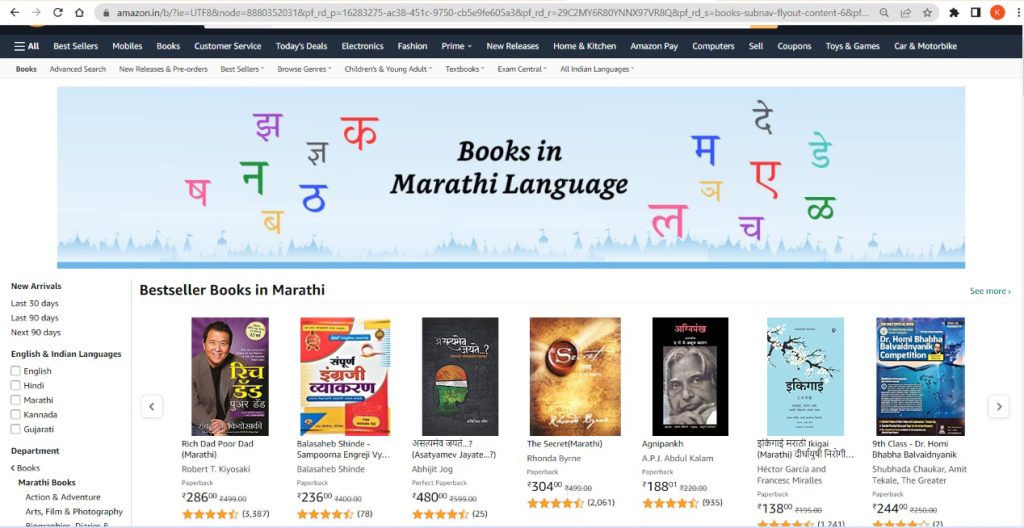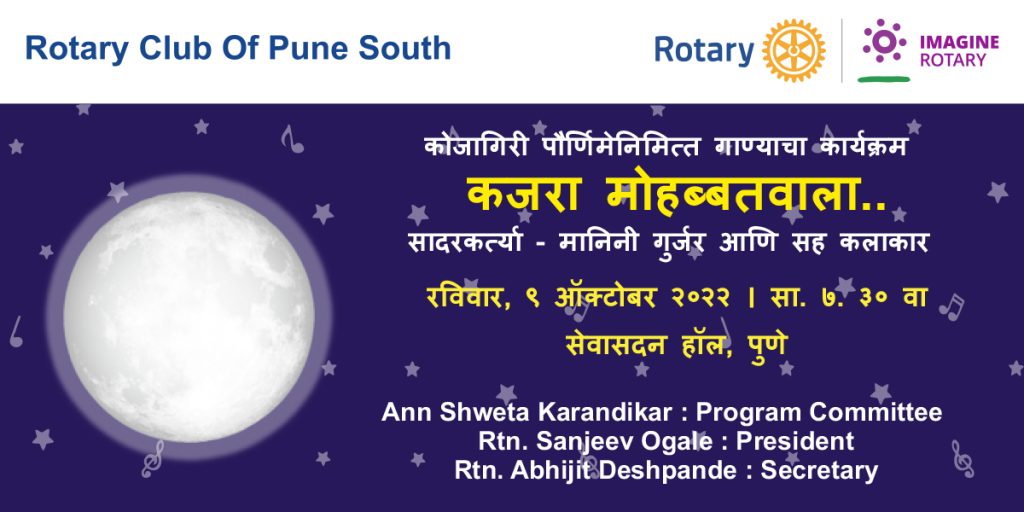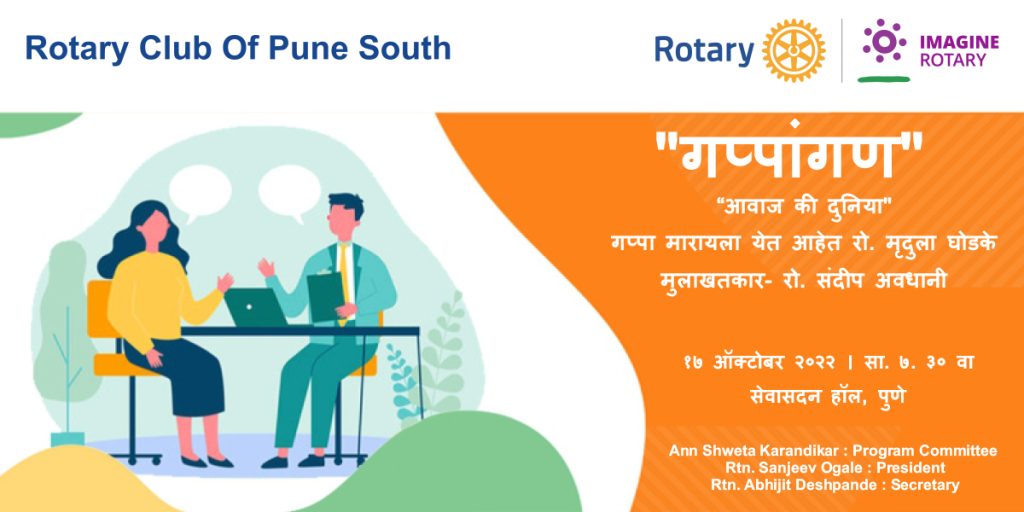

P.P.Rtn. Abhijit Joag's book featured in Amazon's bestsellers!

Volunteering with Borderless Organisation of Mr Adhik Kadam......Senior Professor and born Guru Rtn Sudhanshu Gore literally swept away the borders of Language, Region and Culture and opened a new wide horizon to this Children.
P.P.Rtn. Sudarshan Natu organized tasty Panipuri program for everyone as Chef's Corner before 19th September's weekly meeting.
Rtn. Madhuri Kirpekar's mouth watering delicious Rajasthani dish at Chef's Corner.
Everybody enjoyed before 26th September's weekly meeting.


Maurya Empire faded away slowly, to be replaced by 'Shung ' dynasty, with much smaller area under its command. In the north Bactrians,who were Indo Greeks, were spreading their holdings up to Punjab ,under the leadership of King Menander who threatened Pataliputra or Patana itself, but was defeated and pushed back. Menander fell in love with India and converted to Buddhism. In Buddhist legends he is known as King Millind and was very famous, revered like a Saint. From the fusion of Greek and Indian culture, rose the Buddhist art of Gandhara, in the region of Afghanistan and the frontier region. A granite pillar, known as Heliodorus column at Sanchi on which Sanskrit inscriptions are carved gives insight into this Greeko Indian amalgamation. It mentions the name of one Heliodorus, a Greek Ambassador, who was the worshiper of Lord Vishnu.
Shakas or scythians from Oxus Valley in Central Asia were defeated by Yueh Chih clan from the east and driven out to North India.Shakas latter converted themselves to Buddhism and Hinduism. Kushans who were a clan of Yueh Chih further defeated Shakas and pushed them further south to Kathiawad and Deccan platue. Kushans thus established their supremacy over Northern India. Some of the Kushans accepted Hinduism, but most of them converted to Buddhism. Their famous King Kanishka is regarded as a hero in Buddhist stories. State religion of Kushan Empire was a mixed affair, in which zoraostrianism also contributed. The Empire was situated near the border of India with it's Capital near Peshawar and the University of Taxila. It became a meeting place of the different nationals like Indians, Scythians, Yueh Chih, Iranians, Bactrians, Greeks, Turks and Chinese, with cultural exchanges between them. Historically first contact between China and India occurred in 64AC.when Chinese Embassy was established in India. Peach and Pear trees originated from China. An interesting mixture of Indian, Chinese and Iranian culture arouse from these contacts at the edge of Gobi Dessert.
During the time of Kushan rule a great division occurred in Buddhism, in the form of Mahayana and Hinyana sects. There were many gathering to discuss the issue. Mahayana is similar to Hinduism with idol worshipping of God like Buddha. Hinyana adhered to the original principles of Buddhism. In India Mahayana sect triumphed, mainly due to a scholar like Nagarjuna, in the 1st century. Mahayana beliefs spread in China, while Cylon and Burma stayed with Hinyana.
Though Kushans had accepted India and Indian culture as their own, they were opposed by Nationalist forces. When more foreign forces poured into India, they were defeated and driven out, under the leadership of Chandragupta 2nd. Thus in 4th century AC, Gupta Empire was established. Gupta era started in 320AC, where in one after another great rulers were produced. To oppose the invasion, old Brahmin-Kshatriya element was revived and foreign elements which were not absorbed into the society and the culture were opposed. An attempt was made to create a state with Old Brahminic principles, but due to the lack of confidence a rigid state was created and slowly India was self withdrawn and isolated.
When Aryans came to India or Bharatvarsha or Aryavarta, amalgamation of two different races and cultures occurred and new Indo-Aryan culture emerged. Though many foreign elements came and absorbed, and though many trade and cultural contacts were in existence, India mainly kept to itself and gave little attention to the happenings outside. But with repeated invasions from outside by the people having different cultures and customs, Bharatiya culture was endangered and there was a Nationalist reaction, opposing these invasions. The mixtureof religion, philosophy, history, traditions, customs, social structures, which could be called as Brahminism or Hinduism ,became a rallying point. Though Buddhism originated and flourished in India, it became International and Hinduism prevailed in India. Though Hinduism was tolerant towards various faiths, religions, races and continued to absorb them into itself, it was aggressive against foreign invaders. This Nationalist attitude gave way to Imperialism and Imperial Kingdom of Guptas arouse. Gupta era was highly modern in attitude, active, energetic,and cultured.One of the Gupta rulers Samudra Gupta was called Indian Napoleon.
Gupta Empire was at it's peak from early 4th century upto 150years hence. The Empire with it's successors continued on,though in lesser glory, for next 150years. The new invaders from Central Asia called White Huns came to India with their barbaric behavior and fanatic cruelty. This annoyed people and under the leadership of King Yshovarman of Kanauj, different states United to attack Huns.Huns were defeated and their chief Mihiragula was captured,but released later on as was the custom,by King Baladitya Gupta. Mihiragula returned the favor by attacking Baladitya treacherously. The Hun rule lasted only for about fifty years or so, with many petty Hun chiefs causing trouble occasionally. But most of them were accommodated in the vast society. The troublesome chiefs were crushed by King Harshavardhan of Kanauj, who built up a powerful state across North and Central India. Harshavardhan was a Mhayana Buddhist, which was similar to Hinduism .Harshavardhan favored both the religions. In his time a famous traveler on pilgrimage Hsuan Tsang came to India. Harshavardhan was a poet and dramatist himself. In his time his capital Ujjain,became famous centre of culture .He died in 648AC. At that time Islam was emerging as a dominant religion in Arabia, Africa and Asia.
In South India great states flourished nearly 1000 years after Maurya Empire ceased to exist. Andhras, who defeated Shakas, Kushans, Chalukyans, Rashtrakutas, Pallavas, Cholas, who conquered Cylon and South Burma with it's King Rajendra at the helm .Rajendra died in the year 1044AC.Cholas were sea faring people, having sea trade with Greeks and Romans. Chalukyans exchanged Ambassadors with Sassnid rulers of Persia. The repeated invasions in the North did not affect South directly, but was benefited by the migration of craftsman and artisans from the North and became a strong hold of orthodoxy.
The End









28th September 2022
"Password for Success" at Tolani Institute
The program at Tolani Institute on 28th September 2022 went very well. Our Mind Health Committee guided the students with the theme "Password for Success". All the sessions were highly interactive and were appreciated by the Students. Rtn. Mrudula talked on emotional intelligence, Rtn. Shrikant covered Graphalogy for success and I gave them a success system.
Our president Sanjeev is associated with this Institute for more than 25 years. Due to him, we got a royal treatment. We got an opportunity to visit ship engine room, deck, workshop, simulator room etc. All had fun experiencing it.
Thanks to speakers Mrudula and Shrikant, President Sanjeev, Secretary AB and all the supporters for making this project successful. Sudarshan, Sugandha, Prabhune, Madhuritai, Snehatai, Nitin, Sangeeta and Bhagyashri were there to support.





